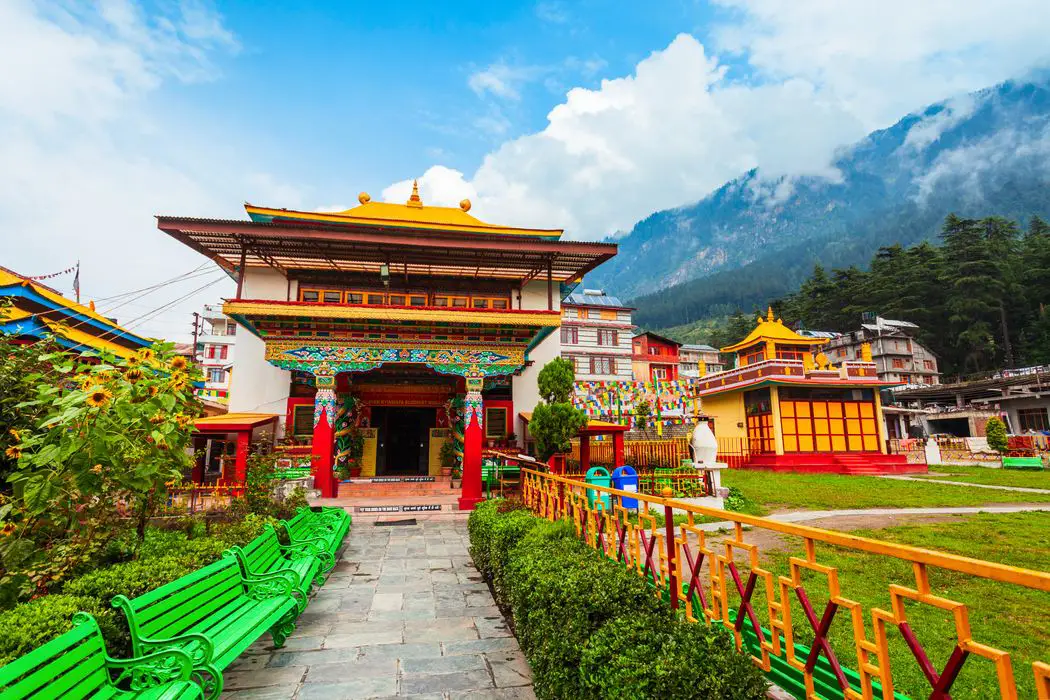Introduction
A monastery is a location where spiritual activities are carried out, typically consisting of a group of structures. Monks and nuns, respectively, are the terms used to describe those who reside there. These are home to those who have decided to live in seclusion from civilization. These monasteries are situated where there is no disturbance. Here, individuals either lived in communities or alone. Monasteries are places where people go to remember the universal force through practices like prayer, chanting, etc.
Classification of Monasteries
Based on the duties of the monks, there are various sorts of monasteries. Generally, there are four different types of monasteries:
Solitary type of Monastery
A person lives alone in a solitary monastery. He isolates himself from everything and tries to concentrate on his religion.
The monastery with the community system
It refers to a monastery where two or more individuals lived together as a group. Here, rigorous laws and customs are upheld.
Mendicant type of Monastery
The monks who live here must approach other individuals on foot to ask for alms. Therefore, monks found this form of monastic life to be rather challenging.
Combined Monastery
Monks are supposed to play roles in societal institutions like hospitals and schools in this kind of monastery.
Monasteries in Ancient India
Monastery of Buddhism
In about 400 BCE, the Buddhist Monastery was founded. Monks living in this type of monastery, are recommended to settle down for a while rather than move around. The Vassa retreats took place in parks, where wealthy followers used to donate to the sangha. Cenobitic monasticism, in which monks and nuns lived for a year in monasteries, evolved through time into the norm of the entire sangha residing in one region during the recess of the Vassa.
During the Buddhist era, many educational institutions were established. It became quite well-known and spread all over the world. Hemis Monastery in Ladakh, Tawang Monastery in Arunachal Pradesh, Rumtek Monastery in Sikkim, etc. are a few of the well-known Buddhist monasteries in India.

The Monastery of Christianity
In Egypt City, the first Christian monastery was established. Following that, monasteries were established in various locations. A cenobitic monastery was a brand-new sort of monastery that Pachomius introduced. The monks and nuns shared one space in this style of the monastery. Furthermore, they carried out every task, including working and worshipping, in unison. The monk who used to live by himself but took on all the duties was known as a hermit.
The Monastery of Hinduism
It is possible to date the Hindu Monastery’s existence to the prehistoric era. Hindu monasteries were constructed in the Vedic era. Mathas is the name of the monasteries. India is home to several well-known maths, including Chatur-Amnaya, Belur Math, Gorkana Matha, Kasi Matha, and Kathia Baba ka Sthaan in Vrindavan.
Monastery of Jainism
Mahavira introduced Jainism in the fifth century BC. He built his Monastery so that he might engage in spirituality. The five pillars of the monastic way of life were honesty, non-possession, non-stealing, non-violence, and consistency in one’s sexual behavior. One of the most well-known religions in the world was Jainism.
Importance of Monasteries
Monasteries have a significant influence on those who pursue spirituality and come from various religious backgrounds. These monasteries have an enormous impact on social life in addition to having an impact within their walls. The monastery is home to several schools, universities, and other educational institutions. Additionally, it extends outside of India. The monastery has contributed significantly to the realm of medical services in addition to serving educational purposes. The following are some of the monastery’s salient characteristics:
- Monasteries were founded to assist universal power and in pursuit of information about it.
- Spreading knowledge among common people is one of a monastery’s most significant responsibilities.
- Monasteries also include significant aspects related to the distribution of food, clothing, and other accessories.
- In the monastery, monks live and care for the residents without regard to cost or value. Additionally, they assist unprivileged families by giving them a contribution.
Summary
People living in the monastery go about their everyday lives, practicing their responsibilities and tasks regularly. To allow monks and nuns to focus peacefully on their spiritual lives, monasteries are typically built-in places that are removed from social and political influences. Monasteries have a significant impact on how society develops on emotional, social, and cultural levels. The monasteries have undergone significant modification and development in modern times. These monasteries now provide a variety of facilities and cutting-edge technologies. These days, the location is visited by people, who are accommodated.
Frequently Asked Questions
1. Name the oldest monasteries in the world.
Ans. The oldest monasteries in existence are those of St. Macarius (Deir Abu Makar) and St. Anthony (Deir Mar Antonios), both of which are governed by the Patriarch of the Coptic Orthodox Church.
2. Who was Pachomius?
Ans. Pachomius, commonly known as St. Pachomius, founded the Christian community monasticism known as cenobitic. Through his teachings on various ascetical practices, he inspired thousands of Christians to begin living as such.
3. Why did people join monasteries in ancient times?
Ans. People in ancient times were upset with the superstitions and complexities of religion. Therefore, people began settling into monasteries to live modest lives to find solace, enjoy independence, and overcome the misery of the world.
4. Which is the oldest monastery in India and which religion it belongs to?
Ans. Although not the biggest, India’s oldest monastery is Hemis Monastery in Ladakh. The monastery reportedly dates to the eleventh century and was re-established in 1652. The revered thangkas and famous, historic treasures are kept in this monastery.
5. Why didn’t Islam support the monastic culture?
Ans. The Islamic faith holds that since humans and God have a direct line of communication, they do not require a mediator like a monk or a nun to do so.